HDBaseT is a new video and data transfer standard that could soon replace HDMI. Most video productions have to set up at least 2-3 cables for each camera station, depending on if you cameras are robotic, or need to transmit tally. Imagine if you only had to set up one? If that sounds like the future, well then you are in the future, because that workflow exists right now.
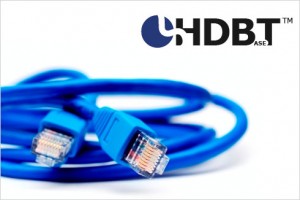
- Uncompressed HDMI digital audio and video
- Ethernet (100BaseT)
- Control (RS-232 serial and IR)
- Power
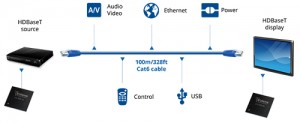
The HDBaseT Alliance is calling the core of the technology “5Play.” HDBaseT can transmit HD video, audio, control signals and 100W of power through a single CAT 5e or CAT 6 cable for up to 100 meters or 328 feet.
The workflow begins with a transmitter box that you plug into a power source, connect HDMI video, and ethernet RS-232 control to communicate with the camera control interface. The box combines all the data into a CAT5e or CAT6 cable, which then connects to a receiver box that will split the signals and power again to connect to a camera. Some cameras use a HDMI cable to connect to the receiver box while using the ethernet cable for control AND power. This is referred to as ‘PoE’ aka ‘power over ethernet’ and will become more familiar as new products are released this year.
This workflow has two boxes and 5-6 cables involved. If that seems a bit complex, there are some easier solutions on the horizon.
HDBaseT workflows can also function with the transmitter box feeding a HDBaseT receiver built directly into a camera. This eliminates the need to split the ethernet signal into 2-3 separate cables. Since HDBaseT is capable of handling all of the data, there is no inherent disadvantage to using it to do everything, and the signals are split internally in the camera for efficiency.
There are two cameras right now that are using this approach. The Datavideo PTC-150T HD PTZ Camera and the AJA RovoCam 4K block camera.
The Datavideo PTC-150T is a robotic camera that can be controlled remotely to pan, tilt, zoom, adjust exposure/focus and more. The Datavideo PTC-150T is made for live production applications that need multiple angles or have moving subjects.
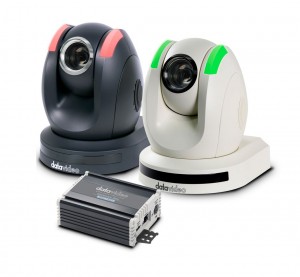
The AJA RovoCam is a fixed block camera with the ability to zoom and adjust exposure/focus. It is made for corporate and proAV settings that only require a fixed angle.

Both cameras carry a price tag that is higher than other cameras in their class, which leads to the question:
Why is it worth it to upgrade to an HDBaseT workflow?
HDBaseT eliminates the need to purchase a cable for each signal type, and overcomes the disadvantages of HDMI video cables.
HDMI can only carry video signals reliably up to about 20 meters. Another option is converting to HD-SDI, which can carry signals for up to 100m, like CAT5e/CAT6 cables using HDBaseT. To convert HDMI to HD-SDI requires a converter which can be hundreds of dollars on its own.
Power cables are cheap, but are usually thick and heavy, and depending on where you are doing your installation, may require a union or licensed electrician. The cost of hiring a professional electrician to install cables could easily cost thousands of dollars.
After everything above is considered, CAT5e and CAT6 cables are available at a cost that is less than HD-SDI or HDMI alone for 300 feet of cable. It is also sold at retailers who do not specialize in video, making it more widely available.
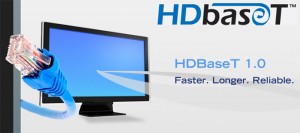
HDBaseT looks to be a new standard that will simplify video production workflows across many applications. Although ethernet is not a new technology and HDBaseT uses the same coding technology as Ethernet (it even has an Ethernet channel), the packet-based technology is different from the traditional Ethernet packets. HDBaseT simply relies on the same physical cabling which provides the multiple benefits of the cost-effective CAT5e/CAT6 infrastructure.

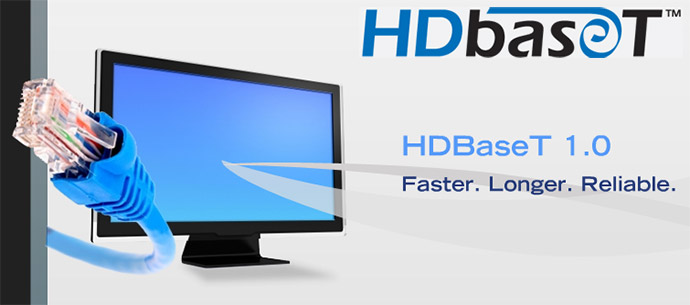
One thought on “What is HDBaseT and How is it Changing the Future of Video?”